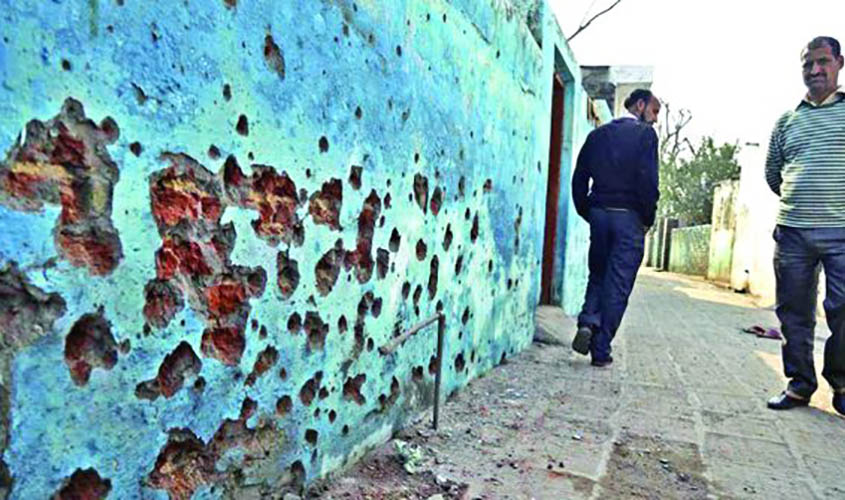Narcotics and extortion are the major sources of funding for the separatist groups of Kashmir.
NEW DELHI: The Jammu and Kashmir government’s decision to remove security cover of Hurriyat leaders in the state is unlikely to have a bearing on the ever-flourishing business of separatism in the state. Owing to the political patronage, deep-rooted nexus of extortion and narcotics as well as funding from Pakistan, the “industry” will continue to thrive, security experts believe. Sources in security agencies said funds coming in from Pakistan for carrying out subversive activities ensured that a large chunk of youths in the Valley remained connected to these separatist outfits that essentially thrived by evoking their sentiments.
“The entire business of separatists in Jammu and Kashmir is not dying anytime soon. These groupings not only enjoy patronage from political parties in the state but uninterrupted funding from ISI and the Pakistan army ensures that their activities continue unabated despite political differences between different factions and infighting owing to their personal agenda,” Major General (retired) Shashi Asthana told The Sunday Guardian.
The state government had on 17 February decided to remove security cover to five separatist leaders in wake of the Pulwama suicide attack
In the last 10 years, the state government has spent Rs 11 crore on transportation and security of 14 Hurriyat leaders. The state government had told the state Assembly last year that an amount of Rs 10.86 crore had been spent on their security and transportation fuel of Hurriyat leaders during the period 2008-2017. However, sources claimed that the actual amount spent on these leaders could run into hundreds of crore during this period.
According to officials in security agencies, the National Investigation Agency (NIA) has established direct link of ISI and Pakistan-based terror outfits with Hurriyat leaders in J&K who use the financial assistance from Pakistan for terror funding and fuelling unrest. They said separatist leaders have been the biggest beneficiaries of terror funding, as apart from creating unrest with the resources, they have used the money to buy properties and invest in business.
Investigations have revealed how top Hurriyat leaders have acquired funds through hawala channels and illegal transactions in the garb of cross-LoC trade. And while a chunk of these funds are distributed to stone-pelters and new recruits through their crowd managers, these leaders have also amassed huge wealth.
Major General Asthana said narcotics and extortion were the major sources of funding for these separatist groups and they used the money and weapons to lure youths into anti-India activities. “These separatist leaders act as conduits… the money comes from across the border and the Hurriyat leaders distribute the money to local crowd managers who further disburse the amount among youths who find it a lucrative job to throw stones at security forces or even fire bullets at them,” the Army veteran said, adding that though there was evidence against their involvement in terror funding, the conviction rate in such cases was relatively low.
But while the Hurriyat leaders have succeeded in spreading their network across the state, there appears to be little support from public. This also became evident from gthe high turnout in the 2014 Lok Sabha elections followed by the Assembly polls in December 2014, despite the Hurriyat’s call for boycott. In Assembly elections, the state registered its highest voter turn-out in the last 25 years with an estimated 76% of polling. In the general elections, BJP had surprised many by emerging with the highest vote share of 32.4% and winning 25 of 87 Assembly seats in J&K, while finishing second in another nine.
Asthana also pointed out at hundreds of madrasa operating in the Valley that preach Wahhabism. “Nobody raised a voice when hundreds of madrasas came up in Anantnag some years ago. Now the same madrasas are producing youths in the age-group of 18-20 years who become easy prey for recruitment by these groups. These children are brain-washed and don’t hesitate in taking up arms in lieu of some quick money,” he said.
Officials claimed there have been several occasions when infighting and political and ideological differences between various factions of the Hurriyat Conference have come out in open. However, patronage from the local political class has kept them thriving since the early 1990s when these separatist groups were formed during the peak of militancy in the state. In 1998, rift had widened between separatist leaders S.A.S. Geelani and Mirwaiz Umar Farooq when then Prime Minister Atal Bihari Vajpayee and then Pakistani President Parvez Musharraf had begun dialogues. However, the government of the time used the divide between the Hurriyat leaders to engage them in talks with then Home Minister L.K. Advani and later with the Manmohan Singh government. By providing these leaders with security cover, the government wanted to infuse a sense of security among them, sources said.

